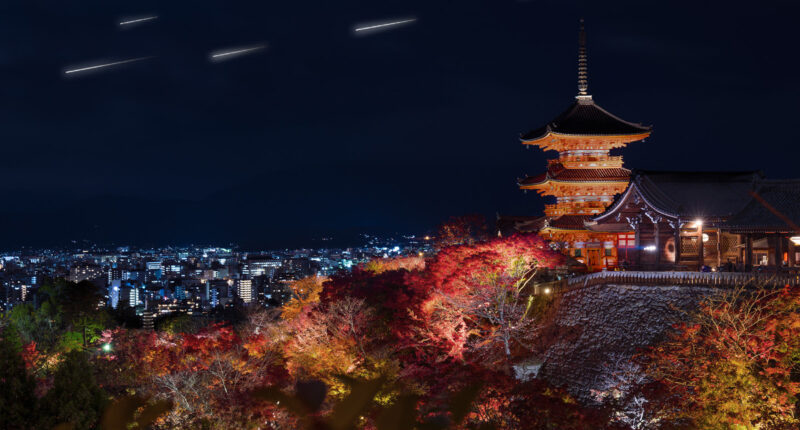THE world’s first man-made ‘meteor shower’ is set to grace the skies after years in the making.
Japanese company ALE has choreographed the landmark display, following a major setback in 2020.
Tokyo-based ALE has been working on satellites to produce shooting stars for several years now.
The celestial light show was due to take place in 2020 but a malfunction in one of the satellites meant the space fireworks had to be delayed.
Now the launch is set to take place in 2025, when “ALE hopes to give Brits and others all over the world the opportunity to view the world’s first live human-made meteor shower“.
The project, called Sky Canvas, will collect atmospheric data in the mesosphere, the third layer of the atmosphere which is too low to be observed by satellites and too high for weather balloons or aircraft.


It is hoped that studying the path and light emission of these shooting stars will enable ALE to collect data – such as wind speed, and atmospheric composition – which can then help scientists and researchers develop new weather models.
Dr Lena Okajima, founder and chief executive of ALE, said: “Our aim is to contribute to the sustainable development of humankind and to bring space closer to all of us, by expanding the area of human activity beyond Earth to discover, collect and apply essential data from space.
“As a first step, I founded ALE to create the world’s first human-made shooting star, to inspire wonder and to spark scientific curiosity.
“In the future, by combining critical climate research with a new form of space entertainment we believe we can further our scientific understanding of climate change while also inspiring curiosity and interest in people all over the world about space and the universe.”
Most read in Tech
ALE plans to mirror natural shooting stars with metal-based particles, around 1cm in size.
These grains will be placed in small satellites and sent to space where it will orbit the Earth.
The particles will then be released around 400km above Earth, travel a third of the way around the planet before burning upon entering the atmosphere at an altitude of 60-80 km.
The company has tested a number of different colours in ground-based experiments.
However, it’s not yet known whether multicoloured shooting stars can be produced in orbit.
“We will also take all possible precautions in the release of meteor sources so that meteor sources do not hit other man-made objects and increase space debris,” ALE said.
Best Phone and Gadget tips and hacks

Looking for tips and hacks for your phone? Want to find those secret features within social media apps? We have you covered…
We pay for your stories! Do you have a story for The Sun Online Tech & Science team? Email us at [email protected]










